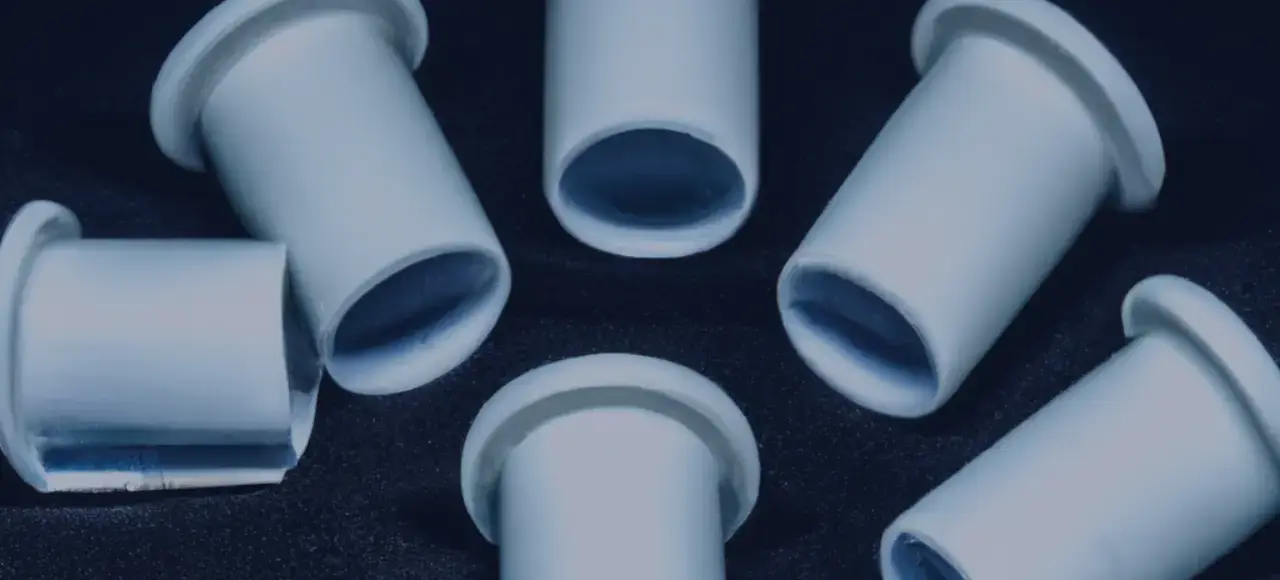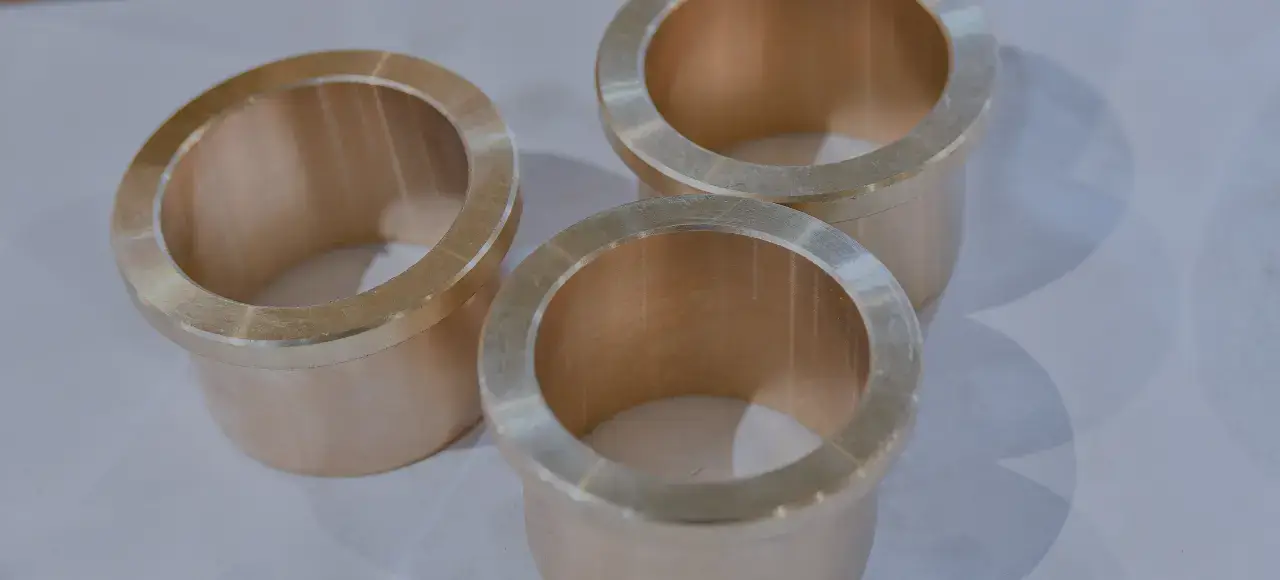When it comes to mechanical applications, bushings play a crucial role in reducing friction, wear, and noise between moving components. Among the various types of bushings available, two popular choices are bronze bushings and plastic bushings. While both serve similar purposes, they have distinct characteristics that make them suitable for different scenarios. In this article, we will explore the key differences between bronze and plastic bushings, helping you make informed decisions for your specific applications.
Introduction to Bushings
Before diving into the differences between bronze and plastic bushings, let’s understand what bushings are and their significance in mechanical systems. Bushings, also known as plain bearings or sleeve bearings, are cylindrical-shaped components inserted into housings to provide support and reduce friction between two moving parts. They are used in various industries, such as automotive, aerospace, machinery, and industrial equipment.
Comparison Between Bronze & Plastic Bushings:
Bronze bushings have been a popular choice for manufacturing due to their durability, strength, and reliability. They are made from a combination of copper and tin, and their composition can vary depending on the application requirements. Plastic bushings, on the other hand, have gained popularity over the years due to their unique properties and versatility. They are typically made from materials like nylon, acetal, polyethylene, and various other polymers.
Comparison: Bronze Vs. Plastic Bushings
| Metrics | Bronze Bushings | Plastic Bushings |
| Materials | Made from copper and tin alloy | Made from nylon, acetal, polyethylene, polymers |
| Applications | Heavy loads, high-pressure environments Components sliding against each other High-temperature applications | Weight-sensitive and noise-sensitive applications Aggressive environments Budget-conscious projects |
| Advantages | High Temperature Resistance Self-Lubricating Properties Excellent Wear Resistance High Load Capacity | Lightweight Cost-Effective Easy Machinability Low Noise and Vibration |
Bronze Vs. Plastic Bushings Advantages
Bronze Bushing Advantages
- Low Coefficient of Friction: Bronze bushings offer a relatively low coefficient of friction, resulting in smoother operation and reduced energy loss.
- Corrosion Resistance: Bronze has good corrosion resistance, which ensures the bushings’ longevity even in harsh environments.
- Self-Lubricating Properties (with lubricants): Bronze bushings can be impregnated with lubricants or have solid lubricant plugs embedded, offering self-lubricating capabilities that reduce the need for external lubrication.
- Excellent Wear Resistance: Bronze exhibits excellent wear resistance, making these bushings suitable for applications where components slide against each other.
- High Temperature Resistance: Bronze bushings can withstand high temperatures, making them suitable for applications exposed to heat and extreme conditions.
- High Load Capacity: Bronze is a robust material, allowing bronze bushings to handle heavy loads and high-pressure applications effectively.
Plastic Bushing Advantages
- Lightweight: Plastic bushings are significantly lighter than bronze bushings, making them ideal for applications where weight reduction is crucial.
- Easy Machinability: Plastic materials are relatively easy to machine and can be molded into various shapes and sizes, allowing for customization and versatility.
- Cost-Effective: Plastic bushings are generally more affordable than bronze bushings, making them an economical choice for budget-conscious projects.
- Low Noise and Vibration: Due to their ability to dampen vibrations effectively, plastic bushings produce less noise during operation, which is beneficial in noise-sensitive applications.
- Corrosion Resistance: Plastic bushings are highly resistant to corrosion and chemicals, making them suitable for applications in aggressive environments.
- Low Friction Coefficient: Like bronze bushings, plastic bushings also exhibit a low friction coefficient, contributing to smoother and more efficient operation.


Bronze Vs. Plastic Bushings Applications
To further illustrate the differences between bronze and plastic bushings, following are some specific applications where each type excels:
Bronze Bushings Applications
- Heavy machinery and equipment, such as construction machinery and mining equipment.
- Automotive components like suspension systems and steering linkages.
- Industrial pumps and compressors, where high-pressure and high-temperature conditions are present.
- Marine applications, including ship propellers and steering systems due to their corrosion resistance properties.
Plastic Bushings Applications
- Electrical appliances and consumer goods, where lightweight and noise reduction are essential.
- Food processing and medical equipment, where corrosion resistance and lubrication-free operation are crucial.
- Office machinery, such as printers and copiers, to minimize noise during operation.
- Recreational equipment, like bicycles and skateboards, to reduce weight and friction.
To Summarize
In conclusion, both bronze and plastic bushings serve essential roles in various mechanical applications, but their unique properties and characteristics make them suitable for different scenarios. Bronze bushings are renowned for their strength, high load capacity, and resistance to wear and high temperatures. On the other hand, plastic bushings are valued for their lightweight, low friction coefficient, corrosion resistance, and cost-effectiveness.
Understanding the specific requirements of your application will help you make an informed decision and select the most appropriate bushing for optimal performance and longevity. Whether it’s heavy-duty machinery or lightweight consumer goods, the right choice of bushing will contribute to the efficiency and reliability of your mechanical systems.
Zetwerk is a leading global supplier to fulfill diverse bushing requirements. Whether customers need bronze bushings for heavy-duty applications or plastic bushings for lightweight and corrosion-resistant solutions, Zetwerk offers excellent services who adhere to strict quality control measures. With competitive pricing, customization options, expert support, and timely delivery, Zetwerk ensures high-quality products that meet specific needs, making them the go-to solution for fulfilling bushing requirements in various mechanical applications.




FAQs
Bronze bushings are typically made from a combination of copper and tin. Their advantages include high load capacity, excellent wear resistance, self-lubricating properties, high-temperature resistance, corrosion resistance, and a relatively low coefficient of friction.
Plastic bushings are preferred in applications where weight reduction is crucial, such as electrical appliances and consumer goods. They are also suitable for food processing and medical equipment due to their corrosion resistance and lubrication-free operation. Additionally, plastic bushings are used in office machinery and recreational equipment to minimize noise and friction.
Consider factors such as load capacity, operating conditions, temperature, speed, noise requirements, and budget constraints. For heavy loads, high temperatures, and harsh conditions, bronze bushings are preferred. On the other hand, if weight reduction, corrosion resistance, and noise reduction are critical, plastic bushings may be the better choice.
The durability of plastic bushings depends on the application and the specific material used. While bronze bushings generally have higher load-bearing capabilities, modern plastic bushings with advanced materials can offer excellent durability in many applications.
Plastic bushings can be a suitable replacement for bronze bushings in many applications, especially where weight reduction and corrosion resistance are essential. However, for high-load and high-temperature applications, bronze bushings are still preferred due to their superior strength and temperature resistance.









